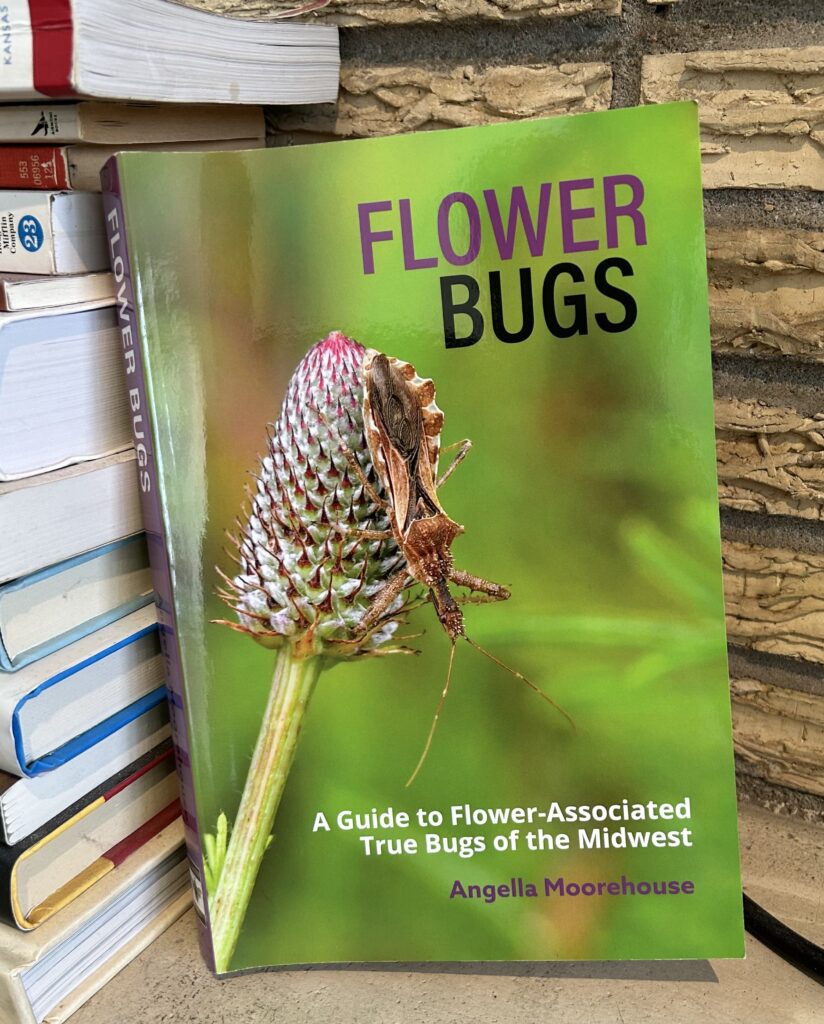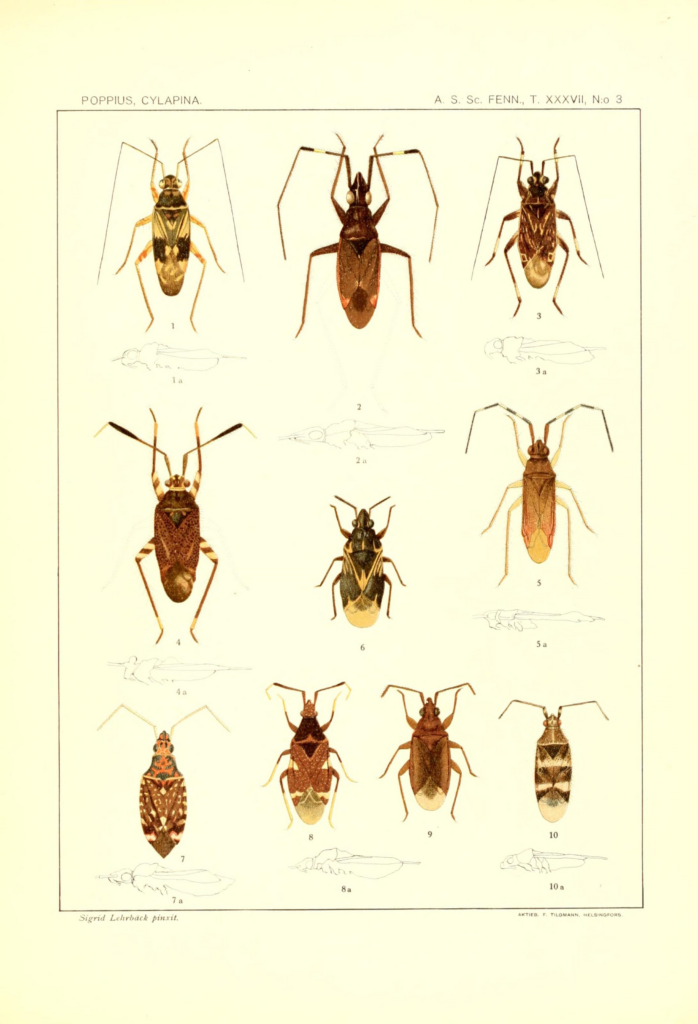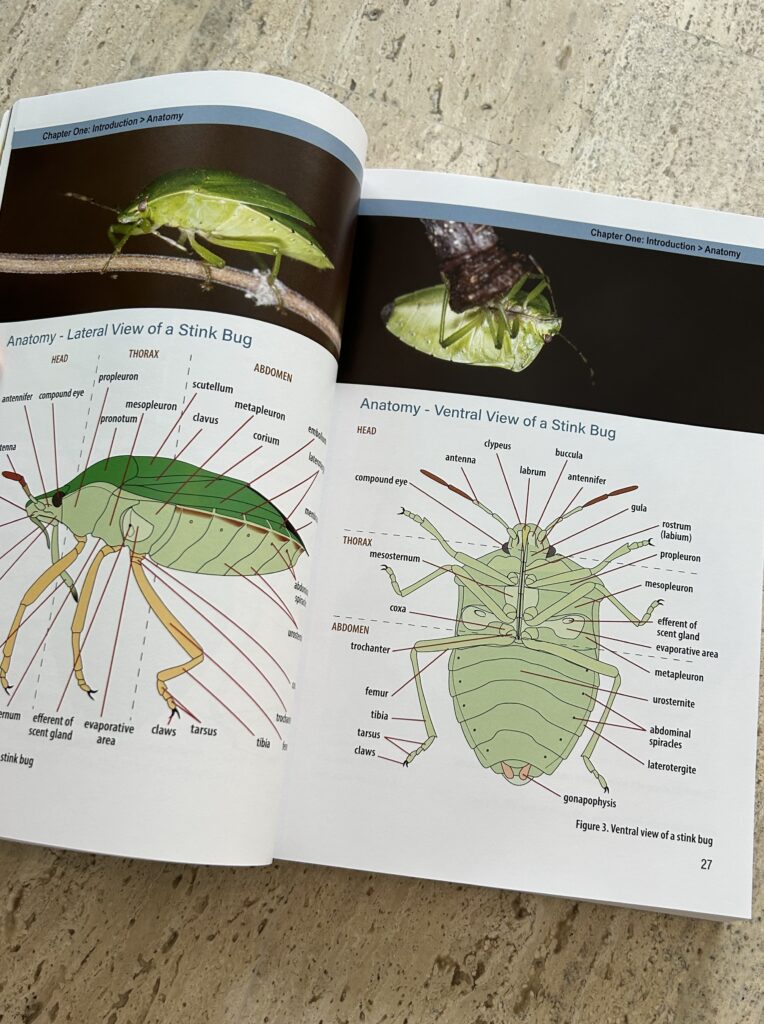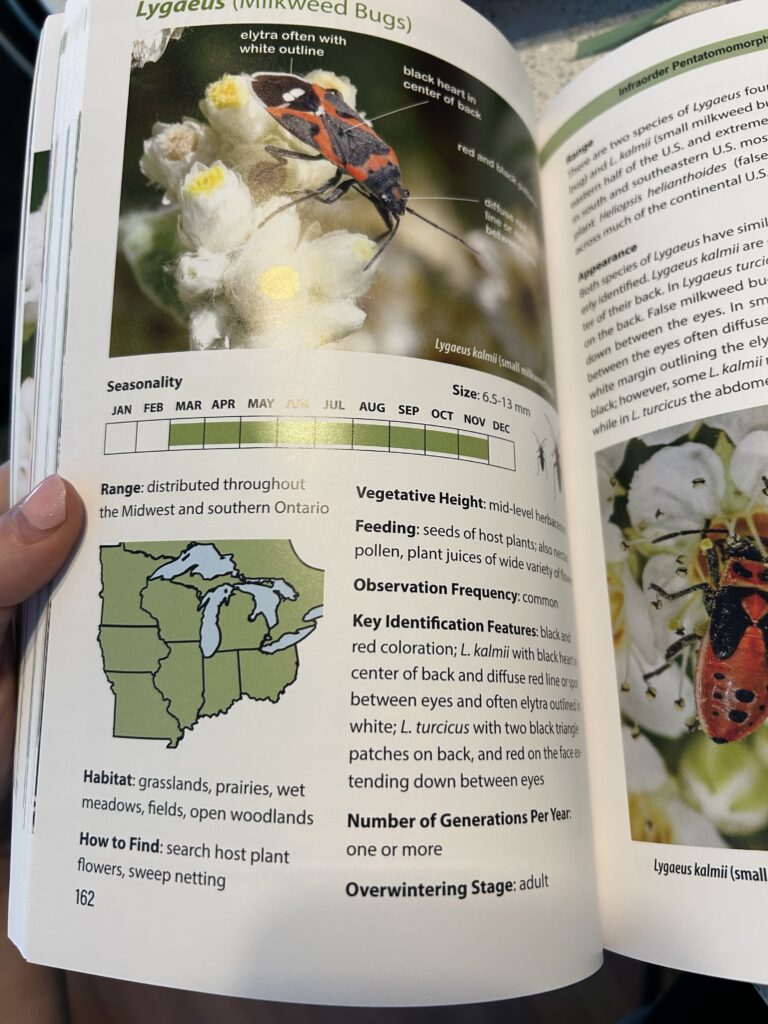Angella Moorehouse has given us a great new resource for learning about and appreciating the “little things that run the world”. This book focuses on true bugs, a group of insects that don’t get a lot of good press, and their relationships to some of our favorite native flowers. It was published in 2023, by Pollination Press LLC out of Minnesota.
What is a true bug?
Most people can identify a butterfly and bumble bee. Most can even recognize a grasshopper, or praying mantis. But when we encounter a true bug, the common response is, “what IS that?”. True bugs, meaning an organism in the order Hemiptera, are not as well recognized. That might be because there are so many of them (~40,000 species, and counting) or because they lack the good press that pollinators and other crop-benefitting insects have garnered in recent years. Until now!
“This book is intended to showcase the diversity of a misunderstood and under appreciated group of flower-visiting insects and to introduce a wider audience to the diversity of true bugs and the role that they play in our natural areas.”
Angella Moorehouse, Flower Bugs, A Guide to the Flower-Associated True Bugs of the Midwest
To be very simplistic about it, true bugs are identified by their double set of wings and their sucking, piercing mouthparts (perfect for sipping plant juice, or the liquified insides of other bugs…yum!). It is a pretty broad categorization. Perhaps that is why there is so much diversity in this order of organisms.
Contents
Like any good guide book, it has a short section of introductory information to prime the beginner bug enthusiast. Complete with diagrams and taxonomic tables, you will feel like an expert before you even get into the profile pages. It contains tips for how to effectively attract, capture and even photograph bugs, should you wish to catalog your sightings. The book then devotes the next 260 pages to detailed insect profiles.
The Little Details
For each species, readers get a full color photo, seasonality chart, native range map, feeding and behavior notes, and a list of plant species they are likely lurking on. For a beginner with little knowledge of insect classification, it will be difficult to use this alone as an identification guide. But in conjunction with an app, like iSeek, it will be a gold mine. The app can narrow it down to genus or even species, then use this book to get a positive ID. It is a great resource to learn more about the insects encountered in the yard and garden. Identification is key, especially if you are considering using pesticides as a control measure for a given insect in your yard. The downside is that this book focuses on midwest species, and their map does not include the Great Plains. Though Kansas is not on their map, rest assured, many species covered in this book are common in our state. It remains an excellent resource for our area.
Be Kind to the Bugs
The public is finally starting to wise up to the bee crisis, and the pesticide problem. Many folks come to the FloraKansas Native Plant Days asking for pollinator friendly plants. But no one comes asking about true bugs. After all, aren’t these the creepy crawlies that halloween and horror movies tell us to beware of? Aren’t these the pesky bugs that prey on our houseplants and invade our cellars? In a word, no.
This book reminds us that these little creatures play an important ecological role, no matter how under researched or unnoticed it may be. With their fantastic array of colors and great many variations in shape, size, and ecological role, it is hard not to be charmed by the bugs in these pages and to look with ever more wonder the next time I meet one in the real world.
The book is available now in our gift shop, and many of the plants listed in the book as host to these insects can be purchased at our FloraKansas Native Plant Days, coming up soon!





